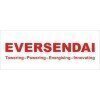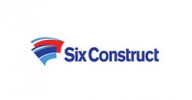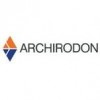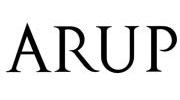Filter interviews by
Six Construct Interview Questions and Answers
8 Interview questions
I admire your commitment to innovative construction practices and sustainable development, aligning with my career goals and values.
Your company's reputation for excellence in civil construction projects, such as the recent urban development initiative, inspires me.
I am impressed by your focus on sustainability, particularly your use of eco-friendly materials and practices in projects.
The opportunity to work with ...
I have managed various civil construction projects, including residential, commercial, and infrastructure developments.
Led a residential project with over 100 units, ensuring timely completion and adherence to budget.
Oversaw a commercial building project that included retail spaces and office areas, focusing on sustainable practices.
Managed infrastructure projects, such as road construction and bridge rehabilitati...
A Document Controller ensures accurate documentation and compliance in projects, managing records and facilitating communication.
Organize and maintain project documents, ensuring easy access for team members.
Implement document control procedures to ensure compliance with industry standards.
Coordinate with various departments to gather and verify documentation, such as contracts and reports.
Utilize document managem...
A safety officer's observation book is crucial for documenting safety practices, incidents, and improvements in the workplace.
Records daily safety inspections and observations.
Documents incidents and near misses for analysis.
Tracks safety training sessions and participant feedback.
Notes recommendations for safety improvements.
Serves as a communication tool between staff and management.
Always seek guidance from your senior when in doubt to ensure safety and compliance in the workplace.
Clarify any uncertainties regarding safety protocols before proceeding with tasks.
For example, if unsure about the use of personal protective equipment (PPE), consult your senior.
Regularly communicate with your senior about safety concerns to foster a culture of safety.
Document any guidance received for future refe...
Using PPE is essential for protecting workers from hazards and ensuring a safe work environment.
PPE includes items like helmets, gloves, goggles, and masks to protect against specific risks.
For example, hard hats protect against head injuries from falling objects.
Gloves are crucial when handling chemicals to prevent skin exposure.
Safety goggles shield eyes from harmful substances or flying debris.
Hearing protectio...
Safety officers maintain files to ensure compliance, track incidents, and promote workplace safety through documentation.
Maintain incident reports to analyze trends and prevent future occurrences.
Keep safety training records to ensure all employees are compliant with safety protocols.
Document safety audits and inspections to track compliance with regulations.
Store Material Safety Data Sheets (MSDS) for hazardous m...
Installation, testing, and commissioning are key processes in the field of piping foreman.
Installation involves setting up the piping system according to design specifications.
Testing is done to ensure the integrity and functionality of the installed pipes.
Commissioning involves the final inspection and verification of the piping system before it is put into operation.
Examples of installation tasks include cutting...
Six Construct Interview Experiences
5 interviews found
I applied via Walk-in and was interviewed in Nov 2021. There was 1 interview round.
Interview Questionnaire
24 Questions
- Q1. Every body using ppe main our goal is zero accident
- Q2. Every body hight work,excavation ,concreting etc time very care full guys
- Q3. Minimum 10 hours working time ur conest the work period
- Q4. Any work team work
- Q5. Zero accident
- Q6. Must using the ppe
- Ans.
Using PPE is essential for protecting workers from hazards and ensuring a safe work environment.
PPE includes items like helmets, gloves, goggles, and masks to protect against specific risks.
For example, hard hats protect against head injuries from falling objects.
Gloves are crucial when handling chemicals to prevent skin exposure.
Safety goggles shield eyes from harmful substances or flying debris.
Hearing protection is ...
- Q7. Excavation time both sides warning tape and singnal man muston should
- Q8. Any operator with out licences and 3rd party certificte must on should
- Q9. Any employee 3rdparty certificte sccaffoder,rigger,banksman,operator, mustonshould no certificte nowork
- Q10. Any safety officer every month inspecton of safety harness,handtools,slings,belts,and machine
- Q11. Before work every morning toolbox meeting,every 6 month evacation drill
- Q12. Every safety officer ur area observetion book mainted
- Ans.
A safety officer's observation book is crucial for documenting safety practices, incidents, and improvements in the workplace.
Records daily safety inspections and observations.
Documents incidents and near misses for analysis.
Tracks safety training sessions and participant feedback.
Notes recommendations for safety improvements.
Serves as a communication tool between staff and management.
- Q13. If any dout ask the ur sineor
- Ans.
Always seek guidance from your senior when in doubt to ensure safety and compliance in the workplace.
Clarify any uncertainties regarding safety protocols before proceeding with tasks.
For example, if unsure about the use of personal protective equipment (PPE), consult your senior.
Regularly communicate with your senior about safety concerns to foster a culture of safety.
Document any guidance received for future reference...
- Q14. Height work 2meter with out safety harness not allowed the work
- Q15. Every 3month colour cod system maintined
- Q16. Any accdent &incident area immediately barication immdiately inform to ur sineor& pm
- Q17. U informed properly location inform
- Q18. Every every 3month emmergency drill trainig
- Q19. Safety officer main the files
- Ans.
Safety officers maintain files to ensure compliance, track incidents, and promote workplace safety through documentation.
Maintain incident reports to analyze trends and prevent future occurrences.
Keep safety training records to ensure all employees are compliant with safety protocols.
Document safety audits and inspections to track compliance with regulations.
Store Material Safety Data Sheets (MSDS) for hazardous materi...
- Q20. Toolboxmeeting,training,induction,accdent &incident,manhours,observetion,
- Q21. Inspection monthly, clinets comment before 24to 48hours closed
- Q22. Keep the first aid box 50meter distance
- Q23. First aid room locataon all area sign board
- Q24. 24hours first aider muston should with 3rd party certificte uae law
Interview Preparation Tips
I applied via Recruitment Consulltant and was interviewed before Aug 2023. There were 2 interview rounds.
(2 Questions)
- Q1. Which project's carried out
- Ans.
I have managed various civil construction projects, including residential, commercial, and infrastructure developments.
Led a residential project with over 100 units, ensuring timely completion and adherence to budget.
Oversaw a commercial building project that included retail spaces and office areas, focusing on sustainable practices.
Managed infrastructure projects, such as road construction and bridge rehabilitation, i...
- Q2. Why you wanted to work with us
- Ans.
I admire your commitment to innovative construction practices and sustainable development, aligning with my career goals and values.
Your company's reputation for excellence in civil construction projects, such as the recent urban development initiative, inspires me.
I am impressed by your focus on sustainability, particularly your use of eco-friendly materials and practices in projects.
The opportunity to work with a div...
(2 Questions)
- Q1. Joining time period
- Q2. Salary negotiations
I applied via Recruitment Consulltant and was interviewed before Aug 2023. There was 1 interview round.
About my self, asking for family members and little about the work.
I applied via Approached by Company and was interviewed in Apr 2022. There was 1 interview round.
(3 Questions)
- Q1. About docuemtn controller
- Q2. About workes and responsibelity
- Ans.
A Document Controller ensures accurate documentation and compliance in projects, managing records and facilitating communication.
Organize and maintain project documents, ensuring easy access for team members.
Implement document control procedures to ensure compliance with industry standards.
Coordinate with various departments to gather and verify documentation, such as contracts and reports.
Utilize document management s...
- Q3. About works and responsiblity
Interview Preparation Tips
Interview Questionnaire
2 Questions
- Q1. You know installation testing commissioning
- Ans.
Installation, testing, and commissioning are key processes in the field of piping foreman.
Installation involves setting up the piping system according to design specifications.
Testing is done to ensure the integrity and functionality of the installed pipes.
Commissioning involves the final inspection and verification of the piping system before it is put into operation.
Examples of installation tasks include cutting and ...
- Q2. Watar supply normal pressure
Interview Preparation Tips
Top trending discussions






Interview questions from similar companies

Intern Interview Questions & Answers
China State Construction Engineering Corporationposted on 15 Jul 2024
I applied via Approached by Company and was interviewed in Jun 2024. There was 1 interview round.
(2 Questions)
- Q1. Tell me about yourself
- Ans.
I am a motivated student with a passion for technology and problem-solving, eager to contribute and learn in a dynamic internship environment.
Currently pursuing a degree in Computer Science, focusing on software development.
Completed a project on web application development using React and Node.js.
Interned at XYZ Company, where I assisted in debugging and improving existing software.
Active member of the university codi...
- Q2. What do you know about our company
Interview Preparation Tips

I appeared for an interview in Mar 2025, where I was asked the following questions.
- Q1. Technical civil
- Q2. Civil Quality cube test
Interview Preparation Tips

(2 Questions)
- Q1. Questions will be asked on previous company roles and responsibilities.
- Q2. Depends upon previous experience.
(2 Questions)
- Q1. Basics on structure and finishings
- Q2. Questions on structure and finishings
Interview Preparation Tips

I applied via Campus Placement and was interviewed before Aug 2022. There were 3 interview rounds.

(1 Question)
- Q1. On core subject, logical questions
(1 Question)
- Q1. About Bio, As per resume
Interview Preparation Tips

I appeared for an interview in Oct 2024, where I was asked the following questions.
- Q1. What are the basic principles of budget control?
- Ans.
Budget control involves planning, monitoring, and adjusting financial resources to achieve organizational goals effectively.
Establishing a budget: Create a detailed financial plan outlining expected revenues and expenses, e.g., annual departmental budgets.
Monitoring performance: Regularly compare actual financial performance against the budget to identify variances, e.g., monthly financial reports.
Variance analysis: In...
- Q2. What is the significance of the Building and Other Construction Workers (BOCW) Act in relation to minimum wages for laborers?
- Ans.
The BOCW Act ensures minimum wages and welfare for construction workers, promoting their rights and safety.
The BOCW Act mandates the payment of minimum wages to construction workers, ensuring fair compensation for their labor.
It establishes welfare measures such as health insurance, housing, and education for workers and their families.
The Act applies to various construction activities, including building, roads, and b...
- Q3. What is the difference between indirect costs and overhead costs?
- Ans.
Indirect costs are expenses not directly tied to a product, while overhead costs are ongoing business expenses.
Indirect costs are not directly attributable to a specific project or product, e.g., administrative salaries.
Overhead costs include all ongoing expenses to operate a business, e.g., rent, utilities.
All overhead costs are indirect costs, but not all indirect costs are overhead costs.
Examples of indirect costs: ...
Interview Preparation Tips
Six Construct Interview FAQs
Tell us how to improve this page.
Six Construct Interviews By Designations
Interview Questions for Popular Designations
Overall Interview Experience Rating
based on 2 interview experiences
Difficulty level
Duration
Interview Questions from Similar Companies
Six Construct Reviews and Ratings
based on 52 reviews
Rating in categories
|
Safety Officer
4
salaries
| ₹6 L/yr - ₹15 L/yr |
|
Draughtsman
3
salaries
| ₹6 L/yr - ₹13 L/yr |
|
HSE Officer
3
salaries
| ₹7.2 L/yr - ₹12.6 L/yr |
|
Senior HSE Officer
3
salaries
| ₹21 L/yr - ₹22.2 L/yr |

Saudi Binladin Group

Amara Raja Infra

Eversendai

Descon Engineering
- Home >
- Interviews >
- Six Construct Interview Questions












